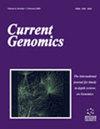Whole Genome Sequences of Cryptotympana Atrata Fabricius, 1775 (Hemiptera: Cicadidae) in the Korean Peninsula: Insights into Population Structure with Novel Pathogenic Or Symbiotic Candidates
IF 1.4
4区 生物学
Q4 BIOCHEMISTRY & MOLECULAR BIOLOGY
引用次数: 0
Abstract
Background: The blackish cicada (Cryptotympana atrata) exhibits unique characteristics and is one of the model cicadas found in the Korean Peninsula. It is a species of southern origin, prefers high temperatures, and is listed as a climate-sensitive indicator species in South Korea. Therefore, this species can be utilized to study the impact of climate change on the genetic diversity and structure of populations. However, research on the genome of C. atrata is limited. Methods: We sequenced the genome of an individual collected from South Korea and constructed a draft genome. Additionally, we collected ten specimens from each of the five regions in South Korea and identified single nucleotide variants (SNVs) for population genetic analysis. The sequencing library was constructed using the MGIEasy DNA Library Prep Kit and sequenced using the MGISEQ-2000 platform with 150-bp paired-end reads. Results: The draft genome of C. atrata was approximately 5.0 Gb or 5.2 Gb, making it one of the largest genomes among insects. Population genetic analysis, which was conducted on four populations in South Korea, including both previously distributed and newly expanded regions, showed that Jeju Island, a remote southern island with the highest average temperature, formed an independent genetic group. However, there were no notable genetic differences among the inland populations selected based on varying average temperatures, indicating that the current population genetic composition on the Korean Peninsula is more reflective of biogeographic history rather than climate- induced genetic structures. Additionally, we unexpectedly observed that most individuals of C. atrata collected in a specific locality were infected with microbes not commonly found in insects, necessitating further research on the pathogens within C. atrata. Conclusion: This study introduces the draft genome of C. atrata, a climate-sensitive indicator species in South Korea. Population analysis results indicate that the current genetic structure of C. atrata is driven by biogeographic history rather than just climate. The prevalence of widespread pathogen infections raises concerns about their impact on C. atrata. Considering the scarcity of publicly available genomic resources related to the family Cicadidae, this draft genome and population data of C. atrata are expected to serve as a valuable resource for various studies utilizing cicada genomes.朝鲜半岛隐翅虫(Cryptotympana Atrata Fabricius, 1775)(半翅目:蝉科)的全基因组序列:洞察种群结构,发现新的致病或共生候选种
背景:黑蝉(Cryptotympana atrata)具有独特的特征,是朝鲜半岛发现的模范蝉之一。它原产于南方,喜欢高温,在韩国被列为气候敏感指示物种。因此,该物种可用于研究气候变化对种群遗传多样性和结构的影响。然而,对 C. atrata 基因组的研究还很有限。方法:我们对从韩国采集的一个个体进行了基因组测序,并构建了基因组草案。此外,我们还从韩国的五个地区各采集了十个标本,并鉴定了单核苷酸变体(SNV),用于种群遗传分析。我们使用 MGIEasy DNA 文库制备试剂盒构建了测序文库,并使用 MGISEQ-2000 平台对 150-bp 的成对端读数进行了测序。结果C. atrata的基因组草案约为5.0 Gb或5.2 Gb,是昆虫中最大的基因组之一。对韩国的四个种群(包括以前分布的地区和新扩展的地区)进行的种群遗传分析表明,平均气温最高的南部偏远岛屿济州岛形成了一个独立的遗传群体。然而,根据不同的平均气温选出的内陆种群之间并没有明显的遗传差异,这表明朝鲜半岛目前的种群遗传组成更多反映的是生物地理历史,而不是气候引起的遗传结构。此外,我们还意外地发现,在某一特定地点采集到的大多数姬蛙个体都感染了昆虫体内不常见的微生物,因此有必要对姬蛙体内的病原体进行进一步研究。结论本研究介绍了韩国气候敏感指示物种 C. atrata 的基因组草案。种群分析结果表明,C. atrata 目前的遗传结构是由生物地理历史而不仅仅是气候驱动的。大范围的病原体感染引发了对 C. atrata 影响的担忧。考虑到与蝉科相关的公开基因组资源稀缺,该蝉基因组草案和种群数据有望成为利用蝉基因组进行各种研究的宝贵资源。
本文章由计算机程序翻译,如有差异,请以英文原文为准。
求助全文
约1分钟内获得全文
求助全文
来源期刊

Current Genomics
生物-生化与分子生物学
CiteScore
5.20
自引率
0.00%
发文量
29
审稿时长
>0 weeks
期刊介绍:
Current Genomics is a peer-reviewed journal that provides essential reading about the latest and most important developments in genome science and related fields of research. Systems biology, systems modeling, machine learning, network inference, bioinformatics, computational biology, epigenetics, single cell genomics, extracellular vesicles, quantitative biology, and synthetic biology for the study of evolution, development, maintenance, aging and that of human health, human diseases, clinical genomics and precision medicine are topics of particular interest. The journal covers plant genomics. The journal will not consider articles dealing with breeding and livestock.
Current Genomics publishes three types of articles including:
i) Research papers from internationally-recognized experts reporting on new and original data generated at the genome scale level. Position papers dealing with new or challenging methodological approaches, whether experimental or mathematical, are greatly welcome in this section.
ii) Authoritative and comprehensive full-length or mini reviews from widely recognized experts, covering the latest developments in genome science and related fields of research such as systems biology, statistics and machine learning, quantitative biology, and precision medicine. Proposals for mini-hot topics (2-3 review papers) and full hot topics (6-8 review papers) guest edited by internationally-recognized experts are welcome in this section. Hot topic proposals should not contain original data and they should contain articles originating from at least 2 different countries.
iii) Opinion papers from internationally recognized experts addressing contemporary questions and issues in the field of genome science and systems biology and basic and clinical research practices.
 求助内容:
求助内容: 应助结果提醒方式:
应助结果提醒方式:


